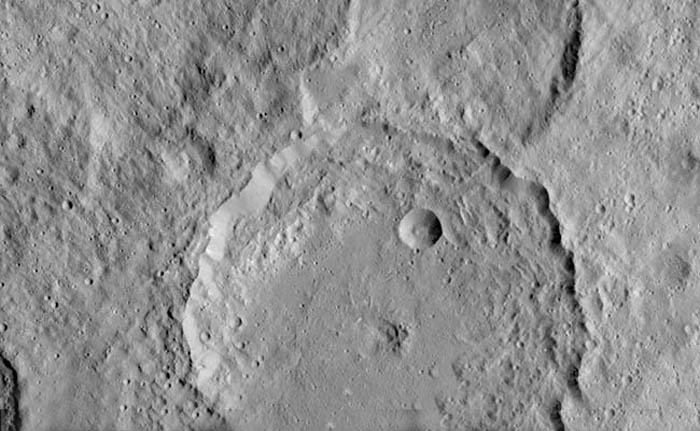NASA Probe Reveals Dwarf Planet Ceres in Intriguing Details

The new up-close view reveals better-defined shapes of the brightest, central spot and features on the crater floor.
"Dawn has transformed what was so recently a few bright dots into a complex and beautiful, gleaming landscape," said Marc Rayman, Dawn`s chief engineer and mission director from NASA`s Jet Propulsion Laboratory in California.
Dawn is the first mission to visit a dwarf planet, and the first to orbit two distinct solar system targets.
"Soon, the scientific analysis will reveal the geological and chemical nature of this mysterious and mesmerising extraterrestrial scenery," he said in a statement.
Because these spots are so much brighter than the rest of Caxeres` surface, the Dawn team combined two different images into a single composite view -- one properly exposed for the bright spots, and one for the surrounding surface.
Scientists also have produced animations that provide a virtual fly-around of the crater, including a colourful topographic map.
Dawn scientists note the rim of Occator crater is almost vertical in some places, where it rises steeply for nearly two km.
The spacecraft has already completed two 11-day cycles of mapping the surface of Ceres from its current altitude.
Dawn will map all of Ceres six times over the next two months.















































